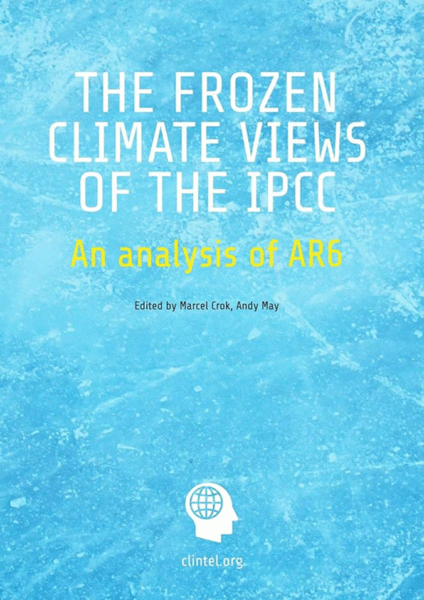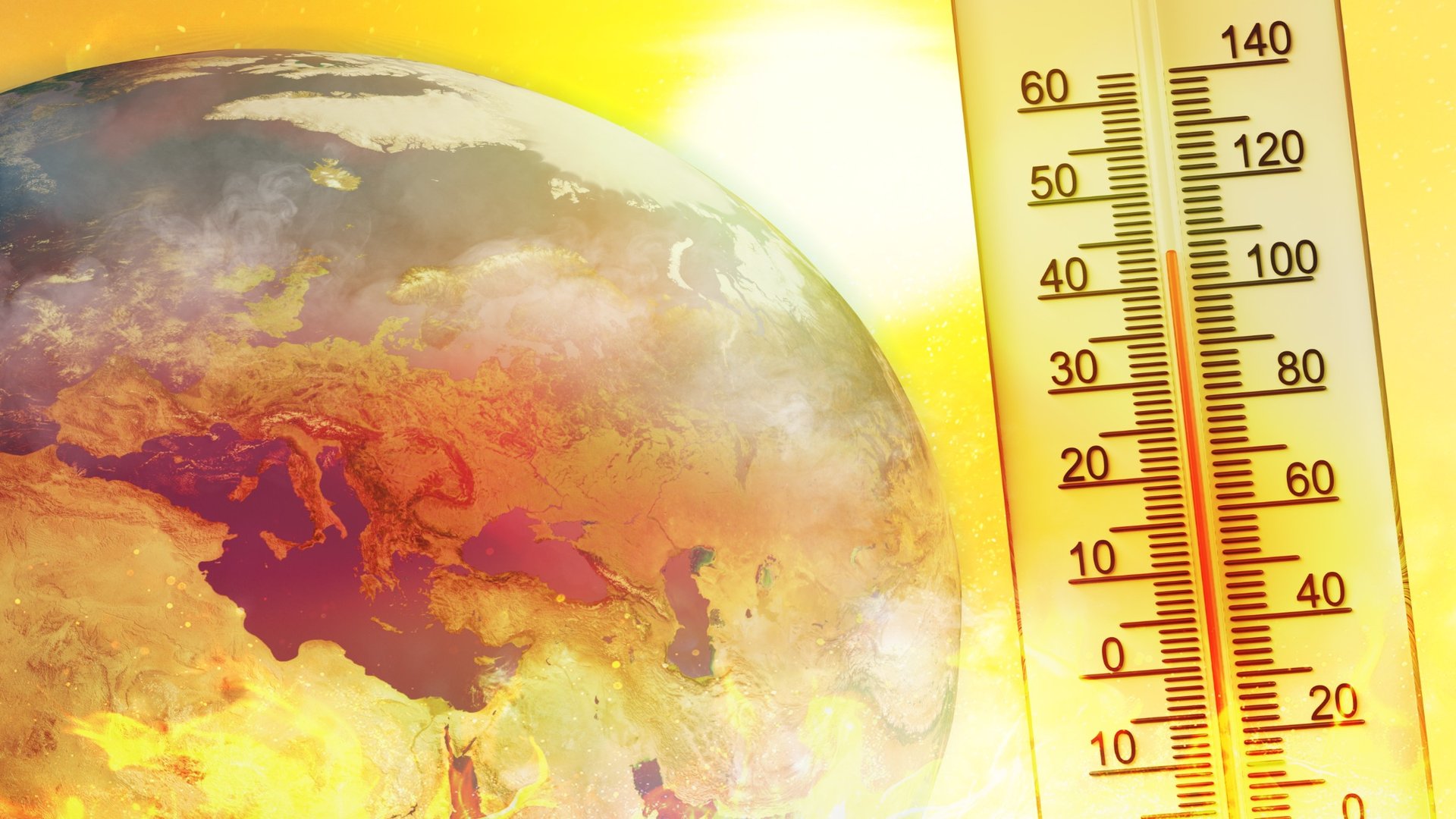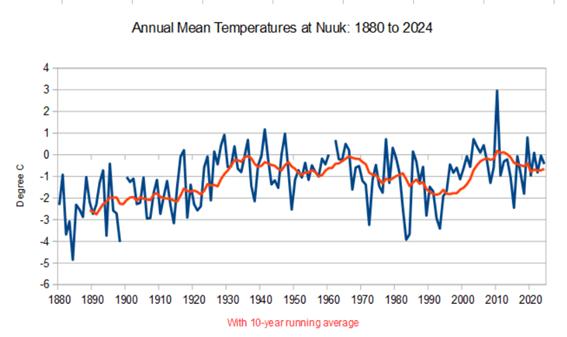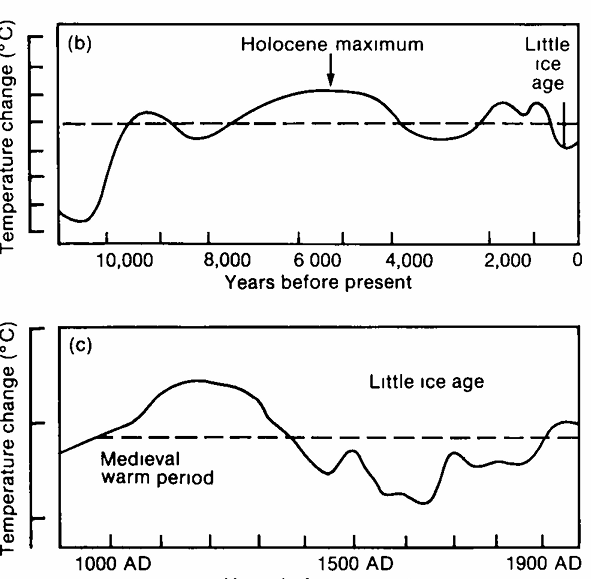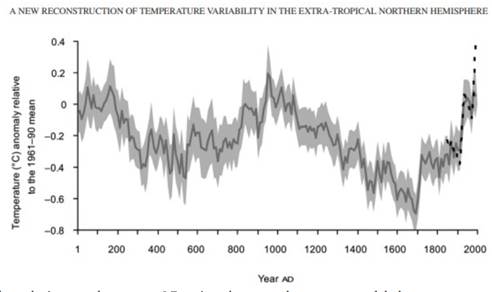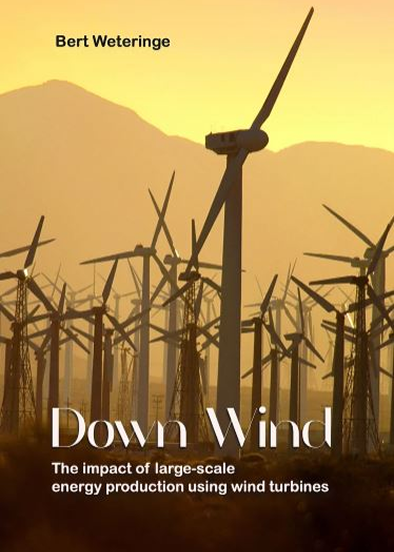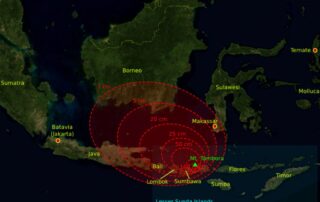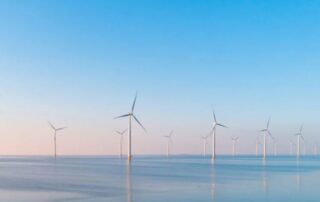Heat waves 2025
Publishing an article on climate change under this title in the middle of a summer heatwave has become something of a tradition. It’s our way of fighting back with some doses of irony the usual climate alarmism campaign, which hibernates like bears in winter before reemerging with a vengeance every summer, taking advantage of the season’s heatwaves (summer: “the hottest time of the year”).
Creativity has never been the core of climate ideology, so you already know the slogans: record temperatures, voracious forest fires, disease-carrying insects that would never have appeared if it weren’t for climate change… in short, a string of misfortunes. The color scale on weather maps continues its alarmist evolution: from blue, orange, and red, it has moved on to a constellation of reds whose darkest shades are practically brown.
Sea temperatures are not spared either. Summer after summer, the media publish the same article with fabricated data: the Mediterranean is “boiling.” In reality, measuring the temperature of a fluid subject to all kinds of horizontal and vertical currents and with such an immense volume is not that easy. The best estimate is provided by the Argo buoy system, which has only been available for about 20 years, according to which the rate of warming in the Mediterranean Sea (0-700 m depth) is 0.04°C per year (4 hundredths of a degree Celsius). If present trend continues, in a decade this would mean a warming of 0.4°C (four tenths of a degree Celsius), a figure that is absolutely imperceptible to marine life or humans. Enjoy your swim.
A bad year for climate ideology
This year, however, climate change propagandists appear gloomy. The blackout in April highlighted the stupidity and danger of the obsession with green energy, which is intermittent, unstable, expensive, and inefficient. Likewise, the drought in Spain, repeatedly used as a climate slogan, ended without the AEMET (Spanish Meteorological Agency) being able to predict either its beginning nor its end. Thus, as a culmination of the rainfall that began last fall, March 2025 was the third rainiest March since 1961.
Before getting into the subject, I would first like to give the good climate news, the kind that makes normal people happy and irritates those who make a living from climate alarmism and their poor, brainwashed victims. Indeed, some interesting studies have been published this year that continue to debunk climate propaganda.
Recently, the journal Science reported on a paleoclimate reconstruction of temperatures showing that “most of Europe was warmer and wetter in the pre-industrial Holocene period than it is today”. The study attributed this to variations in solar radiation, the elephant in the room ignored by climate ideology, obsessed with that wonderful gas called CO2, without which there would be no life on our planet. Furthermore, the increase in CO2, the quintessential food source for plants, facilitates their growth: for every 100 ppm (0.01%) increase in CO2, plant food production increases by 40%.
On the other hand, the latest report from the Danish Meteorological Institute, which covers Greenland (for the time being, according to Trump), shows that temperatures in the western part of the island are now very similar to those of almost a century ago:
Similarly, another study published a few months ago acknowledged that “in the last two decades, the loss of Arctic sea ice has slowed considerably, with no statistically significant decrease in September sea ice extent since 2005”. Remember that, quantitatively, Arctic ice is quite irrelevant, as it accounts for only 0.07% of the planet’s ice. Furthermore, as it floats in the ocean, its eventual melting would not affect sea levels (Archimedes’ principle).
The truly relevant ice mass on the planet (1,250 times greater than that of the Arctic) is in Antarctica, but as the ice cap there has an average thickness of more than 2 km and is protected by an average air temperature of -55ºC (yes, below zero), it seems that we can sleep soundly. In fact, Antarctica has one of the most stable climates on the planet and its temperature has remained constant since records began. What’s more, a study published in Nature suggests that around 1,000 years ago (during the Medieval Warm Period) the temperature on the continent was higher than it is today.
Returning to the AEMET
In my previous article on climate change, I quoted extensively from Ignacio Font (1914-2003), one of the most prestigious Spanish meteorologists of the 20th century, who, after almost half a century in the field, first at the National Meteorological Service and then at the National Institute of Meteorology (now AEMET), which he would eventually head, left us, in his magnificent work Climatologia de España y Portugal (Climatology of Spain and Portugal), an appendix of great value for understanding why the problem of climate prediction “is unresolvable”. At that time, the AEMET was not the propaganda agency it is today, but a serious scientific institution.
In the aforementioned work, Font deconstructed the myth of the unreliable mathematical models of climate prediction and the pretentiousness of scientists who have only a “precarious” knowledge of a complex and multifactorial problem such as the climate. This issue is hugely relevant, as these models form the basis of the propaganda surrounding climate change ideology, which has found in our scientistic society the perfect breeding ground to pass off as science what is nothing more than science fiction, and to pass off as serious scientists charlatans devoted to dubious interests (including their own).
Some might think that Font’s conclusions, written in 2000 and completely orthodox at the time, would have become obsolete a quarter of a century later. However, this is not the case. Indeed, a lengthy 2023 article by Richard Lindzen, PhD from Harvard and professor of atmospheric science at MIT for 30 years (now emeritus), and his colleague William Happer, professor emeritus of physics at Princeton University, expresses the same concerns that Font expressed at the time.
The article by Lindzen and Happer first criticizes the zero CO2 emissions policy, calling it “disastrous for millions of people around the world,” as it would “eliminate nitrogen-based fertilizers, essential for feeding half of humanity, thereby reducing the amount of food in the world, especially in areas most prone to drought, and eliminate the most reliable, efficient, and cheapest source of energy.” This is what Font summarized as “the collapse of the global economy.”
The second thing Lindzen and Happer do in common with Font is criticize the mathematical models that attempt to predict the climate and whose results are presented to the media as prophecies of inevitable fulfillment. In this regard, Lindzen cites other prestigious atmospheric physicists, such as Christy and Koonin, who hit the nail on the head: the models’ predictions fail when compared with actual observations. Therefore, “they are inappropriate for use as climate predictors.” Font called this “the unresolvable problem of climate prediction.”
As mentioned above, the more complex the model, the worse its predictive ability. In this regard, Lindzen and Happer state that “one of the most surprising problems” is that the most recent models (used in the IPCC’s AR6) “are actually more uncertain than the previous ones.”
Font also described in his book the many complex factors that influence our planet’s climate in the long term, of which CO2 is only one. Lindzen and Happer go further and point out that paleoclimate evidence shows two very relevant facts.
The first is that the level of CO2 in the atmosphere today is among the lowest in the last 600 million years. During this period, the concentration of CO2 in the atmosphere has ranged from a minimum of 0.02% (below 0.015% there is no plant life) to a maximum of 0.7%. Today it stands at 0.04% (almost 20 times below the maximum), a figure only slightly above the survival threshold below which there would be no plant or human life due to lack of food. In this sense, the increase in CO2 is reassuring.
CO2 does not determine the temperature of the planet
The second element is that, with all its limitations, paleoclimatic evidence shows an inverse relationship between CO2 and temperature at certain times. When CO2 was at its highest atmospheric concentrations, global temperatures were near their lowest. At other times in Earth’s history, CO2 tended to rise about 800 years after the rise in temperature. This would indicate a temporal correlation opposite to that claimed by the climate change ideology, i.e., that it could be the rise in temperature that would cause an increase in CO2 almost a millennium later, and not the other way around. Therefore, “neither contemporary observations nor geological records support the claim that CO2 is the controlling element of the Earth’s climate.”
In fact, in its first report (AR1, 1990), the IPCC itself included temperature graphs on different time scales that clearly showed periods when the planet’s temperature was significantly higher than at the end of the 20th century, even though CO2 concentrations were minimal. The first graph (approx. last 10,000 years) clearly identifies the Holocene Maximum, while the second (approx. from 1000 AD to the present) clearly identifies the Medieval Warm Period, which was followed, for reasons that are still unknown, by the Little Ice Age (approx. 1350-1850), from which we are fortunately recovering:
This last IPCC graph was confirmed twenty years later in a well-known study of temperatures in the northern hemisphere (Ljungqvist, 2010):
Lindzen and Happer also agree with Font on two additional points. The first is to consider that, in any case, global warming whether contributed or not by an increase in greenhouse gases would be “small and benign,” since history shows that periods with temperatures a few degrees Celsius higher “have been good for humanity.”
CO2 saturation
The second aspect is that of so-called “CO2 saturation,” i.e., the fact that CO2 becomes less effective as a greenhouse gas at higher concentrations: “Each increase in its atmospheric concentration of 50 ppm (0.005%) produces an increasingly smaller change in radiative forcing or temperature, so that if the concentration of CO2 in the atmosphere doubles (from 400 ppm to 800 ppm), it will have very little warming effect. This saturation phenomenon would explain why terrestrial temperatures were not catastrophically high with CO2 concentrations 10 and 20 times higher than today”. Font made the same assertion: “even if greenhouse gas emissions continue to grow, warming will have a limit, once reached (…) the global average temperature would remain constant, regardless of any further increase in the concentration of these gases”.
Finally, Lindzen and Happer also agree with Font on the importance of clouds and the difficulty involved in “a complex and multifactorial system” such as the climate, which Lindzen summarises as “a system consisting of two turbulent fluids interacting with each other (the atmosphere and the oceans) on a rotating planet that is heated by the sun”.
When AEMET was a serious scientific institution and not an association of propagandists, it was able to produce scientists of Font’s caliber. To expect that today is impossible.
Enjoy the warm summer temperatures that we miss so much in winter, your reliable and efficient fossil fuel cars with plenty of range, and the pleasant summer barbecues. Without guilt.
Fernando del Pino Calvo-Sotelo
This article was written by Fernando del Pino Calvo-Sotelo and published on his website fpcs.es on July 18, 2025.
more news
Good News Everyone! We hit ‘Peak Climate’ – Media Articles are in Decline
Good news to start 2026 with: globally, we have passed the peak of media coverage of climate alarmism.
The 2023 climate event revealed the greatest failure of climate science
Instead of trying to determine the causes (Hunga Tonga!) of the extraordinary climate events of 2023, scientists have attempted to fit them into the dominant theory using models, writes Javier Vinos. In doing so, they demonstrate the failure of that theory.
Offshore wind turbines steal each other’s wind: yields greatly overestimated
The energy yields of offshore wind turbines are overestimated by up to 50% in national policy documents. This conclusion is based on an analysis of operational data from 72 wind farms.
